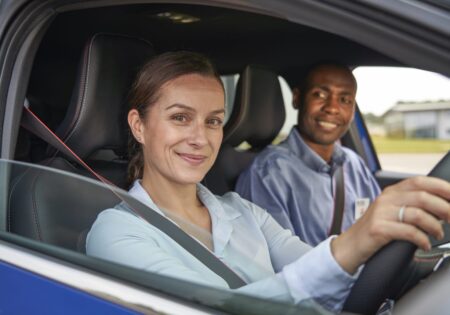Be cycle safe with RED Driving School
Cyclists are one of the most vulnerable and at risk road users because they are less protected in the event of a collision, so drivers need to take extra care when they are nearby.
Between 2007 and 2010, the number of fatal and serious injuries for cyclists increased by 10 per cent and, according to the Department for Transport, that figure is rising.

With many people turning to cycling as a lifestyle choice, it is now more important than ever for young drivers to be aware of them. As outlined in the rules of The Highway Code, both drivers and cyclists have a shared responsibility to be aware of each other’s road presence and are accountable for their actions when driving or cycling.
Cyclists can be difficult to spot so we have put together the following tips to help you drive more safely and help to reduce the risk of accidents involving cyclists:
1. View road safety as teamwork – empathise, be aware, act responsibly.
Making the roads safer requires teamwork: you rely on others to do the right thing and they rely on you to do the same. In order to be a safe driver, you must be aware of other road users.
Being aware of other road users doesn’t mean just in a physical way. It’s important to develop a sense of empathy in order to understand the problems others are experiencing. To do this, you need to develop an understanding of the issues all road users face. For example, when sitting comfortably in a climate controlled car, it is easy to forget how difficult cycling in the rain and wind is. Likewise, a cyclist needs to develop an understanding of how difficult it is for a driver to see them when hidden by other vehicles or when the side windows or mirrors are covered with rain drops.
Make sure you can see and be seen – drivers should make a special effort to check for cyclists and cyclists need to make sure they can be seen by drivers by using lights, wearing bright clothing and avoiding staying in a driver’s blind spot.
Act responsibly at all time – always make sure that you are alert and are not distracted when you’re driving. A person’s mood can also affect their level of respect shown to another road user and, as a result, their decision making process. Sometimes we can lose patience with other road users, especially cyclists, so, before we act, we need to ask ourselves: How do I feel about my actions? Is there something I can do differently? What’s stopping me from driving better?
2. Stick to road rules and stay predictable
A common annoyance often voiced by road users is the issue of rule-breaking. When you go outside of the rules, you become unpredictable and this leads to other road users making the wrong decisions and possibly placing you, others and themselves in danger.
To share the road safely, all road user groups need to know the rules and abide by them. It is also important that you are aware of the rules that apply to each group so that you can understand what they are doing and why. For example, cyclists can take a different path to a driver when negotiating a roundabout or the position for turning right across a road.
3. Keep your knowledge up-to-date
Do you know the difference between a toucan, a pelican, a zebra, an equestrian or puffin crossing? Do you know which line you should stop at when there are ‘advanced stop lines’ at traffic lights with a cycle symbol painted on the road? If not, then you need to update your knowledge as you might be inadvertently breaking the law, as well as putting others in danger. Revisit The Highway Code and ensure your driving knowledge is tiptop.
If you feel you need help to improve your driving, RED Driving School will be happy to help. You can book online at www.reddrivingschool.com or call 0800 021 4601.
If you feel you need to improve your cycling, check out the Department for Transport website ‘Bikeability’, which gives information on courses for both children and adults – https://bikeability.org.uk/






